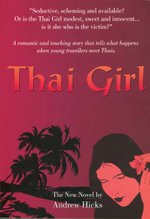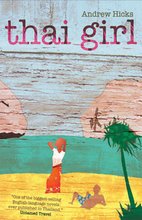

From the Google map the great temple of Banteay Chmar in north west Cambodia shows as a square block and to the east is the huge baray or lake, now mainly cultivated as rice paddies, with an island temple in the middle.

The only boat is too small so the only way is to walk it.

I boldly waded across the swamp, at first with my shorts on.

On the island there's a dry moat so there should be a temple here somewhere.

Now we've found part of the stone lining to the moat.

The first glimpse of stonework is really exciting.

And I foolishly try to climb the wall to get inside.

We find some really fine stonework and carvings.

And the Hulk takes some pics of us just for the record.

I met him on the internet as one does and we went off to Cambodia together looking for what he calls ‘his girls’.
He is totally focused in his quest, he cannot get enough of them and totally adores them, obsessively photographing each and every one. Given that at Angkor Wat alone, there are precisely 1,780 of these girls, that’s no small undertaking.
To him they are supremely beautiful, mysterious, bewitching, even though they are of course much older women and are carved in stone.
It had all happened like this.
Some time ago I’d posted a blog article called, “Thai School Girls Turned Apsara”, (16 March 2009), about the traditional dancing in our local Khmer temple at Sikoraphum in Surin province. This post included pictures of the temple’s very fine carvings of these ‘devata’ as they are called and in no time at all he’d got in touch. Soon we’d struck up a firm cyber friendship, as one sometimes can, and the emails were flying to and fro.
It’s strange how quickly you get to know someone just by exchanging emails but somehow I was finding it hard to remember his name. Was he Clark Kent or Kent Clark? Indiana somebody perhaps, but was it Thomas, Davis or Jones?
He was both scholar and publisher, an explorer across the ages, but could American parents really have named their son after a small county south of London that grows vegetables?
Kent Davis then foolishly allowed me to go with him on a great adventure to Cambodia, and he proved to be amazing company, tolerating me for what was a very memorable week indeed. He was unfailingly energetic and enthusiastic and, in the best possible way, irrepressibly American!
I’ve heard it said though, perish the thought, that Americans can on occasion suffer an irony deficit, especially about themselves. Kent however scoops the pool. He was always ready with a rapier sharp quip. He does irony in buckets and spades, often garnished with a world weary cynicism that can be hilariously funny. Together we boldly waded across a treacherous swamp to find and photograph the hidden temple on the island and he always kept me smiling.
We were way off the beaten track at Banteay Chmar, the deserted ancient Khmer complex in the north west of Cambodia. (See the blog article below.) We’d spent many hours that day out in the heat exploring this huge site and now I’m ready to drop.
‘There’s a mebon temple on an island in the baray a few miles away,’ says Kent, his eyes lighting up, ‘and I just have to see it in case there’s more devata there’.
‘How do we cross the baray though?’ I ask with no small hint of scepticism.
‘I’ve booked a boat and a guide. It’s easy,’ said Kent, brimming with optimism.
Mine was not to reason why and our driver eventually found the place where the boat was supposed to be waiting. We got out, scrambled up a dusty slope and there spread in front of us was a vast lake, spotted with rice paddies and in the blue distance an island covered in trees.
Then we found our boat. It was just a small dugout canoe, a bit wider than my thumbs and next to it in the water stood our guide. A cool looking Cambodian youth in jeans, his tee shirt bore the one word, “HULK”.
‘You don’t think we’re all going in that thing?’ I say, aghast. ‘It’s hardly big enough to take a tailor’s dummy, let alone you!’ Kent looks a little put out.
‘But it’s an amazing design… I love traditional boats,’ I add to lighten the mood. ‘Who made it and why the strange rounded bow?’
It turns out that Hulk himself had carved the dugout from a big tree and the bow was his own idea. It was, he says, inspired by the shape of the bombs the Americans had dropped on Cambodia in such dreadful numbers.
Kent no longer seems dismayed and grasps the nettle. ‘If we can’t go by boat, then we’ll have to walk,’ he says. ‘How deep’s the water?’ he asks the Hulk.
The Hulk stops smiling and indicates his armpits.
‘But it’s probably infested with leeches and scorpions, with water snakes, crocodiles, mines and mosquitoes,’ I mutter to no avail. Kent is now smiling encouragement.
Five minutes later I’m wading up to my armpits in deep mud, my shorts on my head, my camera, mobile, money, passport and dignity all at serious risk of a fall into the mire.
It’s heavy going but eventually we’re stepping ashore on the island where no tourist can have gone before and I have a soggy sense of anti-climax. It’s covered in trees and scrub and our guide has no idea where to find the temple, even if there is one. Have we got ourselves so wet and muddy for nothing?
Then we find what appears to be a dry moat of the kind that surrounds most ancient Khmer monuments and spot what is clearly the laterite lining of the moat. We persist for a few more minutes and soon discover some substantial stone work. There is a temple here after all so there must be some girls too. Kent’s getting excited.
We force our way through the undergrowth and we’re standing below a wall of vast stone blocks. The Hulk scrambles nimbly up it and I follow somewhat less nimbly, aware that he’s a third my age. More sensible to have a major accident near a world class hospital in Sukhumvit than stuck out here in the back of beyond.
Then I realize I can get into the temple by going round the wall rather than over the top of it. Kent is close behind me, his camera recording the stonework. And yes, there are some fine carvings and devata and we tear away the vegetation for a closer look and a photo or two.
Clearly this is an important site, the lake temple a holy of holies set on the island in the baray, a man made lake that had both spiritual significance for the Khmers and practical significance as a water source. When Kent later gave me a Google map, I could see how the ancient site of Banteay Chmar and the baray lie alongside each other and somehow it’s spellbinding. Everything is so overgrown that it’s difficult to see it on the ground but with the map all is crystal clear and its sheer scale is breathtaking.
That day was another great experience on a memorable trip and what’s more we’d found some girls. I’d flicked a deadly scorpion off Kent’s shoulder, there’d been plenty of male bonding and at the end of it all we came back for another beer. I was learning stuff too.
I was beginning to get an idea why Kent is so interested in the devata on the temples and in the current renaissance of classical dance since Cambodia’s darkest days. He told me of his publishing ventures (see www.datasia.us), and he posed the question to me, why is it that so many images of women dominate the monuments at Angkor? What is their significance and why are they all so very different?
Their poses differ, he pointed out, as does their clothing and head dress. Their body shapes vary from young, slim girls to older women with pucker marks around the navel who have clearly borne children. Their features again suggest that these are real individuals and not just mass images of mythical women.
Kent even plans to try to analyse their facial structures as their racial characteristics seem to differ widely. They could all be Cambodia girls but just as likely some are Chinese, some from Java or Thailand and from regions that paid tribute to the great kings at Angkor. (See www.devata.org.)
How fortunate I was that day, following Kent through deep, deep mud out to the mebon temple as he loudly hummed a repetitive Beach Boys theme. My bare legs were lacerated by the undergrowth, the mosquitoes had made a meal of me and my muscles ached for days afterwards.
But it was all worthwhile.
If it wasn’t for him, I’d have missed all of this, have stayed comfortably at home and to this day I’d still not know what a devata was.
Copyright Andrew Hicks The “Thai Girl” Blog December 2009





3 comments:
What a fabulous post Andrew - I almost felt I was there with you.
Hope you a great Christmas and best wishes to you and Cat for 2010. Keep 'em coming!
Great to read more of your Khmer adventures, Lara Croft would be proud of you!
Now if you could turn these experiences and the mysteries of the Khmer Devata into a novel that just might make a decent movie ;-)
Oh goody, clambering over historic sites just like the 19th century colonialists.
Post a Comment